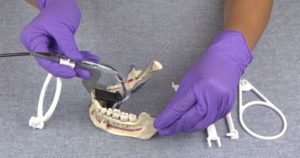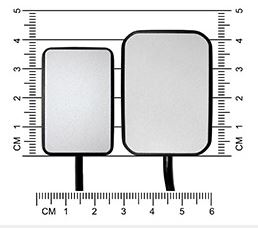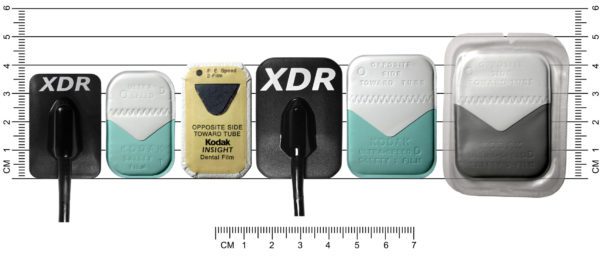Objective
Not all radiographic views are the same. A size-2 sensor is specifically designed for a bitewing or posterior periapical view. But where the dental arch narrows in the anterior region, a size-2 or size-1½ sensor may be too large. So a narrower size 1 sensor is often needed to allow for proper geometry, to ease placement lingual to anteriors, and to properly break contacts.
Not all dental cases are the same. A size-2 sensor has the optimal imaging area for posterior teeth. But the size of a patient’s mouth may vary. The patient’s arch form may be narrow. TMD issues may limit a patient’s ability to open. Tori might limit positioning options. Or the patient may simply be a gagger. In these cases, a size-2 sensor may simply be too large.
Therefore, a size-1 sensor is often needed both for children and adults for optimal patient comfort and proper imaging geometry.
Design
XDR designed its size-1 sensor to meet these needs.
- The decreased width of XDR’s size-1 sensor (close to the width of some manufacturer’s size-0 sensor), allows for easier placement lingual to the anteriors, and therefore allows the sensor to conform to the arch form. The sensor is nevertheless able to capture multiple anterior teeth, a couple premolars and the canine, or a full molar and a half – all from cusp to apex, making any radiograph achievable for even the toughest patients.
- The length of the XDR’s size-1 sensor, sized to the average anterior teeth, allows it to be comfortably placed for the maxillary anterior periapical view, showing the periapical anatomy, root apex, and incisal edges of the teeth.
- When a patient has a small mouth, narrow arch, large tori, limited opening, or a hyperactive gag reflex, the smaller size of the size-1 sensor makes it easier to place, and allows it to be positioned vertically, while still capturing from cusp to apex.
Results
In practices where both the size-2 and the size-1 have been used for anterior radiographs, clinicians and patients generally agree that the size-1 can better capture anterior radiographs while providing more comfort.
|
|
|
|
|
|
Conclusion
Though some believe that a size-2 is suitable for all situations (perhaps due to experience with film’s flexibility), dental schools have long taught otherwise. And experience shows that a size-1 sensor will result in better anterior radiographs, make a patient’s experience more comfortable, and is, in certain situations, the only way to get the most diagnostic radiographic view.


